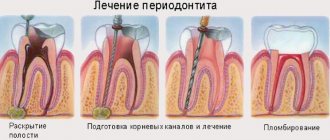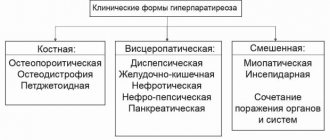Peritonitis Peritonitis. Symptoms and Causes is an inflammation of the peritoneum, the thin membrane that covers the internal organs and the inside of the abdomen. It begins if, for some reason, bacteria enter the abdominal cavity that should not be there.
Inflammation develops quickly and, if not stopped in time, can lead to blood poisoning. This means that pathogenic microorganisms will enter the bloodstream and spread to all organs and tissues, including the heart, lungs, and brain.
This condition is deadly, therefore, at the slightest suspicion of peritonitis, you should immediately contact an ambulance by calling 103 or the rescue service by calling 112.
What are the symptoms of peritonitis
The body reacts acutely to inflammation of the peritoneum, so a serious deterioration in health will be obvious. The key symptom is sharp pain in the abdomen, which intensifies with movement or touch.
Often the sick person takes the characteristic forced position of Peritonitis: on his side, with his legs pressed to his stomach.
Other symptoms of Peritonitis may vary from person to person, but the most common are:
- Increased temperature (more than 38 °C). In some cases, the temperature, on the contrary, drops to 36 °C or lower.
- Nausea, vomiting.
- Bloating.
- Severe constipation and inability to pass gas.
- Difficulty urinating: very little urine comes out.
- Intense thirst.
- Breathing problems, shortness of breath.
- Severe weakness up to clouding of consciousness.
- Rapid heartbeat (tachycardia). Resting heart rate exceeds 90 beats per minute.
- Low blood pressure.
To suspect peritonitis, two of the listed symptoms in addition to the key sign are sufficient.
Also, 103 or 112 should be dialed if Peritonitis. Symptoms and Causes Abdominal pain is so severe that you cannot sit still or find a comfortable position, or it occurs after an injury.
Causes of peritonitis
Depending on the nature of the inflammatory process, primary and secondary peritonitis are distinguished. The primary form of inflammation occurs as an independent pathology, the development of which is preceded by infection of the peritoneal organs with bacteria. Such pathogenic microorganisms include Escherichia coli, streptococcus, staphylococcus, and proteus.
Less commonly, a bacterial infection occurs due to the penetration of pathogenic microbes of a specific type into the peritoneum. This type of bacterial microorganisms includes tuberculosis bacillus, hemolytic streptococci, and pneumococci.
Secondary inflammation of the abdominal cavity is the result of the development of the following pathologies:
- diseases of inflammatory nature - appendicitis and cholecystitis;
- the formation of through defects on the surface of the digestive organs, which is a consequence of an ulcer or appendix;
- purulent damage to internal tissue;
- phlegmon of the inner lining of the abdomen;
- abnormal structure of the digestive system.
Peritonitis develops against the background of mechanical damage to the abdominal wall, which occurs at home and during surgery on the digestive organs. If during an operation the doctor damages soft or muscle tissue, internal bleeding begins or stagnation of fluid containing biological substances occurs, which precedes an abscess.
Inflammation of the serous membrane develops as a complication of chronic intestinal obstruction, rupture of the cystic capsule localized on the ovary, appendicitis and pancreatitis. In the fairer sex, peritonitis also occurs when the pelvic organs are affected by the inflammatory process.
Where does peritonitis come from?
Most often, it is caused by a rupture or perforation (a hole in the wall) of one of the abdominal organs. Here are some common causes of Peritonitis. Symptoms and Causes of peritonitis:
- Appendicitis. This is the name for inflammation and subsequent rupture of the appendix, as a result of which bacteria contained in this appendage of the cecum enter the abdominal cavity.
- Stomach ulcer.
- Diverticulitis. In many people with Diverticulitis, especially those over 40 years of age, bulges called diverticula form on the walls of the colon. Sometimes they become inflamed (a process called diverticulitis) and can rupture, releasing colon contents, including bacteria, into the abdominal cavity.
- Pancreatitis. Inflammation of the pancreas, complicated by infection, sometimes causes bacteria to spread beyond the pancreas.
- Necrosis of part of the intestine due to umbilical hernia.
- Abdominal injuries. A strong blow or penetrating wound can lead to rupture of internal organs and subsequent inflammation of the peritoneum.
- Some medical procedures. For example, kidney dialysis or surgery that was performed with poor hygiene requirements.
Stages of peritonitis
Peritonitis is divided into the following stages:
- reactive stage of peritonitis (the first day after inflammation);
- toxic stage of peritonitis;
- terminal stage of peritonitis.
Reactive stage
peritonitis lasts the first 24 hours. Then, in the absence of treatment, it is replaced by a toxic stage.
Toxic stage
peritonitis lasts for the next 2-3 days.
The toxic stage of peritonitis is replaced by the terminal stage. End stage peritonitis
characterized by multiple organ failure (failure of all organs) and leads to the death of the patient.
How to treat peritonitis
Only in the hospital.
Symptoms of inflammation of the peritoneum are similar to those of other diseases. Peritonitis, for example, lower lobe pneumonia, pleurisy, ascites, pseudoperitonitis (sometimes found in diabetes mellitus). Therefore, before prescribing treatment, the doctor will find out whether it is definitely peritonitis. The doctor will conduct an examination, palpate the abdomen (sometimes it hurts) and prescribe several tests for Peritonitis. Diagnosis and Treatment, which will be done immediately. Among them may be:
- Blood analysis. It is used to determine the level of inflammatory markers - leukocytes. Also, in laboratory conditions, pathogenic bacteria can be detected in the blood and sepsis can be established if it has begun.
- X-ray or ultrasound of the abdominal cavity. Sometimes computed tomography (CT) is prescribed - this is a more accurate and detailed study.
- Analysis of peritoneal fluid. Using a thin needle, the doctor will take a sample of fluid from the abdomen to look for markers of inflammation and identify the specific bacteria causing the peritonitis.
If the patient is really unwell, he will immediately Peritonitis, without waiting for test results, will undergo surgery to find and eliminate the cause of the pain. However, surgery cannot be avoided in any case.
Standard treatment of peritonitis includes three main points.
Antibiotics
First, while test results are not available, the patient is administered one of the broad-spectrum antibiotics. This is a necessary part of preparation for surgery.
Later, when doctors find out which bacteria caused the inflammation, the patient will be prescribed a drug that is most effective against specific microorganisms.
How long you will need to take the medication depends on the severity of the condition and the characteristics of the patient’s body.
Surgical intervention
The operation is performed under general anesthesia. The surgeon's job is to remove the infected tissue and clear the abdominal cavity of fluid and bacteria.
Other medications and procedures
Which ones exactly depend on the patient’s condition. Almost everyone needs painkillers. You will also have to lie under a drip and give enemas. In some cases, oxygen therapy (inhaling air with increased oxygen concentration) and blood transfusion may be required.
Treatment of peritonitis
Treatment of this complication requires immediate hospitalization and, as a rule, emergency surgery. Under no circumstances should the disease be treated on an outpatient basis, since the course of this disease is unpredictable and, in addition to surgical intervention, requires observation of the patient both before and after surgery.
Treatment of peritonitis must be timely and comprehensive and consists of several stages:
- preoperative preparation;
- surgical intervention;
- intensive care and monitoring after surgery.
Preparation for surgery should be complete and last no more than 2, maximum 3 hours. Preoperative preparation includes:
- catheterization of the central vein (installation of a subclavian catheter);
- urinary catheterization;
- gastric emptying (removal of gastric contents using a gastric tube);
- massive infusion therapy of colloids and crystalloids of at least 1.5 liters (replacement of circulating blood volume, normalization of microcirculation disorders, fight against metabolic acidosis);
- preparation for anesthesia (premedication);
- administration of antibiotics (drugs are selected empirically before surgery);
- antienzyme therapy;
- normalization of the cardiovascular system;
- maintaining liver and kidney function.
Surgical intervention has the following goals:
- eliminate the primary focus that caused inflammation of the peritoneum;
- cleansing the abdominal cavity;
- intestinal decompression;
- effective drainage of the abdominal cavity.
Anesthesia for surgery is carried out in several stages. Endotracheal anesthesia is preferable; in extreme cases, spinal anesthesia (SMA) is performed. When performing SMA, a catheter is placed in the subdural space through which local anesthetics (lidocaine) are administered in the postoperative period, which reduces the need to use narcotic drugs.
In case of inflammation of the peritoneum, a median laparotomy is performed (an incision from the pubis to the navel and above, to the sternum), which provides good access to all floors of the abdominal cavity.
- Eliminating the source of the complication
After an incision in the anterior abdominal wall, an inspection of the abdominal organs is carried out and the original source of the disease is established. Further surgical intervention is carried out depending on the situation. In case of perforation or rupture of an organ, the wound is sutured; in case of inflammation (appendicitis, pyovar, etc.), the organ is removed.
The effusion is removed from the abdominal cavity; after its elimination, the abdominal cavity is repeatedly washed with antiseptic solutions (chlorhexidine, dioxidine, furacillin) and dried.
A tube with numerous side holes is inserted into the small intestine. Administration is carried out through the nose, rectum or enterostomy (necessary for removing gases from the intestines).
Drainage of the abdominal cavity is carried out with silicone or rubber tubes (exited to the anterior abdominal wall), which should ensure the removal of effusion from all parts of the abdomen.
The operation ends with suturing the postoperative wound or applying a laparostomy. During laparostomy, the abdominal wall is not sutured; only the edges of the wound are brought together with special sutures.
Management of the postoperative period should be carried out under monitoring, be complete and adequate, with a quick change of prescriptions and tactics in the absence of positive dynamics.
Postoperative patient management includes:
- adequate pain relief;
- carrying out intensive infusion therapy (up to 10 liters per day);
- carrying out detoxification therapy (hemodialysis and lymphosorption, administration of diuretics, hemosorption, lavage of the abdominal cavity through drains or sanitation through laparostomy);
- prescription of antibiotics in maximum doses, intravenous route of administration (combination of cephalosporins with aminoglycosides and metronidazole);
- immunocorrective therapy;
- prevention of intestinal paresis (administration of proserin) and intestinal failure syndrome (administration of atropine, potassium preparations);
- normalization of the functioning of all organs and systems;
- prevention of complications.
Patient care begins immediately after completion of the operation and should continue until the patient is able to work. In this regard, in the postoperative period there are 3 phases (conditionally):
- early – lasts from 3 to 5 days;
- late – first 2 – 3 weeks (hospital stay until discharge);
- remote – until you go back to work or become disabled.
The patient is transported on a gurney to the intensive care ward, where he is carefully transferred to a special functional bed with clean linens. The patient is provided with warmth and comfort. A warm heating pad is placed on the legs, on a blanket, and an ice pack is placed on the postoperative wound (for no more than half an hour), which will prevent bleeding from the wound and somewhat reduce the pain.
The patient is placed in a Fowler's position in bed - the head end is raised 45 degrees, and the legs are slightly bent at the knee and hip joints. If the patient is unconscious (under anesthesia), he is laid horizontally, removing the pillow from under his head. To avoid retraction of the tongue, the head is tilted back slightly and the lower jaw is brought out.
The first dressing change is carried out on day 2, under the supervision of a doctor. If the bandage has become loose or bleeding from the wound has increased, dressing should be done earlier. Honey. The nurse monitors not only the pulse, respiratory rate, blood pressure (every hour) and temperature, but also controls urine output (the urinary catheter is left in place for another 2 to 3 days after surgery) and the amount and nature of discharge through the drains. The drains are periodically washed, and the dressings on the drains are changed by a doctor.
The patient’s nutrition after surgery begins on the 2nd day and parenterally (infusion therapy). Basically, parenteral nutrition includes the administration of 10% glucose and amino acid salts. The volume of infusions is calculated according to the formula: 50 – 60 ml/kg of patient’s body weight.
On the first day after surgery, the patient is not given anything to drink, and to relieve thirst, the lips are wiped with a damp cloth. As soon as peristalsis is established (usually on day 2), the patient is allowed to drink (1 teaspoon of water every hour) and proceeds to enteral nutrition (administration of liquid food and mixtures through a nasogastric tube).
It is undesirable for the patient to remain in bed for a long time (physical inactivity provokes postoperative complications). Taking into account the patient's condition, early activation is started.
By the end of the first day, the patient should begin to actively behave in bed (turn over, bend, straighten limbs). On the 2nd - 3rd postoperative day, the patient first sits down in bed, then, after several deep breaths and exhalations and clearing his throat, he must get up and walk around the room, after which the patient is put to bed. Honey helps to lift the patient. sister. As the condition improves and pain decreases, the patient expands the regimen according to the doctor’s instructions.
Early complications of peritonitis that can occur in the acute period in the absence of timely treatment include life-threatening conditions:
- infectious-toxic shock;
- acute vascular insufficiency and collapse;
- bleeding;
- development of sepsis;
- acute renal failure;
- intestinal gangrene;
- cerebral edema;
- dehydration;
- pulmonary edema;
- DIC syndrome;
- death of the patient.
Long-term consequences of peritonitis (after surgical treatment):
- formation of intra-abdominal adhesions;
- infertility (in women);
- interintestinal abscess;
- intestinal eventration;
- ventral hernia;
- intestinal paresis and obstruction.
If you are diagnosed with peritonitis, you will most likely be sent to the hospital so doctors can monitor your health.
This is associated with the risk of dangerous complications of peritonitis, such as blood poisoning.
The first stage of treatment for peritonitis will be injections of antibiotics or taking antifungal drugs. Usually the course of treatment lasts 10–14 days. If peritonitis was caused by peritoneal dialysis, antibiotics may be injected directly into the abdominal cavity. Research shows this is more effective than intravenous antibiotics.
You will need to dialyze in another way, such as hemodialysis (where the blood is passed through a special filtering machine) until the peritonitis is cured. Painkillers are prescribed to relieve pain.
Many people with peritonitis have trouble digesting and absorbing food, so tube feeding may be necessary. It is inserted into the stomach either through the nose (nasogastric tube) or surgically through the front wall of the abdomen. If these options cannot be used, nutrients may be given directly into your vein (parenteral nutrition).
If internal organs are damaged as a result of infection, they may need to be removed surgically. In some cases, abscesses (cavities filled with pus) appear in the abdominal cavity, from which it is necessary to pump out the pus by puncturing them with a needle. The operation is performed using ultrasound, which helps guide the needle to the abscess. The procedure is usually performed under local anesthesia, so you should not feel any pain.
In addition, surgery is required to eliminate the cause of peritonitis if it is associated with damage to internal organs, such as a ruptured appendix.
Once peritonitis is identified, the patient is scheduled for surgery. It is aimed at eliminating the root cause. The disease cannot be cured in any other way.
Surgery
The patient is hospitalized and preoperative measures aimed at treating peritonitis are carried out:
- relieve pain shock - anesthesia is administered;
- bring the pressure back to normal by introducing food, fluids, and medications.
It also helps normalize the amount of water in the human body and destroy infections.
During surgery, a laparotomy is performed, treating all the contents with a special antibacterial agent. The abdominal wall is cut to identify through holes in the stomach or intestines. The perforations are sutured, the pus along with part of the hollow organs is cut off and removed.












